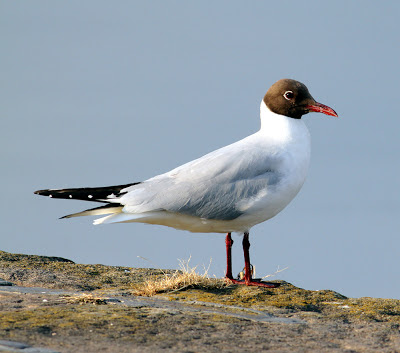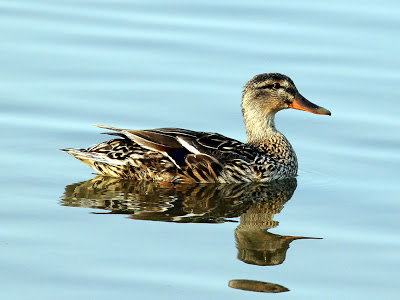There's a little news from Conder after a quick but quiet visit, followed by details of recent ringing recoveries. Just 3 Common Sandpipers today as the species' onward migration continues. Two Greenshank, 1 Spotted Redshank, 50+ Redshank, 18 Lapwing, 15 Oysterctacher, 3 Grey Heron. Usual counts of Reed Bunting, Whitethroat, Sedge Warbler, Shelduck, Goldeneye etc. Here's an Oysterctacher I surprised at Conder - too close for a full framer, plus a handsome gull pictured at Glasson Dock.
From the BTO there are three ringing recoveries concerning birds of the finch family captured at Out Rawcliffe, Lancashire and a fourth one of a Siskin captured in Will's Garstang garden. All four records show typical springtime movements of the species concerned.
Oystercatcher
Lesser Black-backed Gull
From the BTO there are three ringing recoveries concerning birds of the finch family captured at Out Rawcliffe, Lancashire and a fourth one of a Siskin captured in Will's Garstang garden. All four records show typical springtime movements of the species concerned.
2012/2013 was a “Brambling winter”, when wintry conditions on the Continent forced many Bramblings westwards and into the UK, providing bird watchers and ringers a chance to observe or handle these handsome birds.
Y461678, a first winter female Brambling I caught on 13 December 2012 was later recaptured by ringers at Grasbakken, Ringsaker, Norway on 4 May 2013. The latter is an interesting date since by May 4th the Brambling may have been still on migration or with more distance to travel within Norway, north and east to Finland or even further east to Russia. The distance between Out Rawcliffe and Ringsaker, Norway is 1134 kms, the elapsed time 142 days.
Brambling - Lancashire to Norway
Female Brambling
In addition to this recovery there is still an outstanding record of a male Brambling bearing a Stavanger, Norway ring ED8766, the bird captured at Out Rawcliffe on 2nd March 2013, the original ringing details yet to be notified.
The next record concerns an adult male Lesser Redpoll Y461490 I trapped on spring passage at Out Rawcliffe on 25 March 2012. This was a period of intense Lesser Redpoll migration when many were very noticeably heading north but only a small proportion trapped. The bird was later later found dead, the victim of a domestic cat the following year on 25 May 2013 at Beith, North Ayrshire, Scotland, a distance of 238 kms from Rawcliffe Moss. By late May 2013 the bird was almost certainly breeding in the Beith locality after spending another winter many miles south of there.
Lesser Redpoll - Lancashire to Ayrshire
Male Lesser Redpoll
Goldfinch D130275 a juvenile female travelled from Wigan, Greater Manchester on 14th October 2012 to Out Rawcliffe, Lancashire on 30 April 2013. The months of both October and April are classic migration times for Goldfinch. There's no way of knowing where D130275 spent the intervening time, except to surmise that it probably travelled south of Manchester in the autumn of 2012 and north of Rawcliffe in the following spring.
Goldfinch - Wigan to Out Rawcliffe
Female Goldfinch
A male Siskin D204043 captured and ringed at Boyton, Suffolk on 6th April 2013 was recaptured near Garstang, Lancashire on 27th April 2013. Almost certainly this bird had wintered across the English Channel and was on its way north to Scotland or beyond when intercepted. The elapsed time is just 21 days, the distance involved 343 kms.
Siskin - Suffolk to Lancashire
Male Siskin
More news, views and pictures soon from Another Bird Blog.













































































